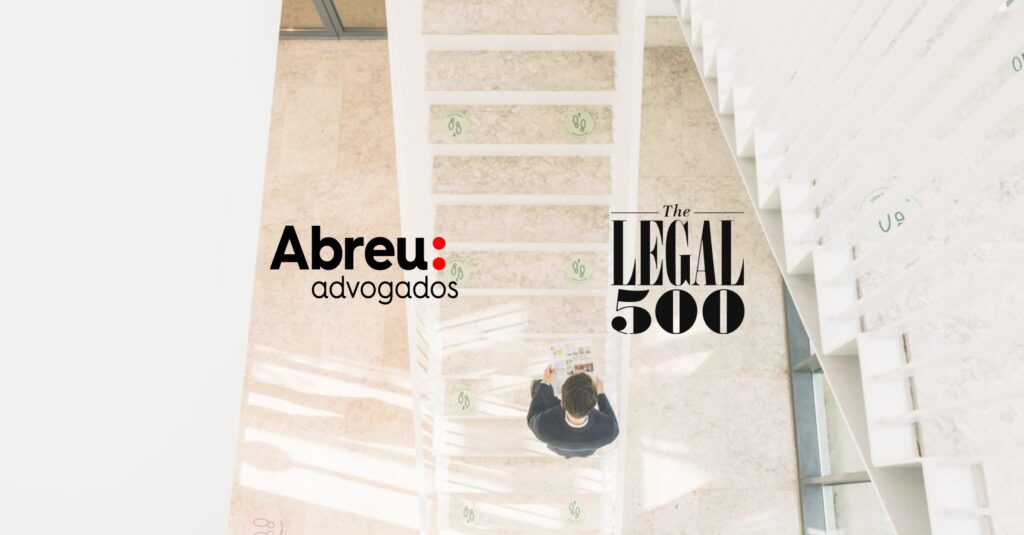12.01.2024
Practice Areas: Finance
Implementing Rules of the Asset Management Regime – CMVM Regulation no. 7/2023
- Context and Legal Framework
Portuguese Securities Market Commission (“CMVM”) Regulation 7/2023 (the “Regulation“) came into force on the 1st of January 2024. This Regulation implements the Asset Management Regime (“AMR“), approved by Decree-Law 27/2023 of 28 April, which promoted a transversal review of the national legislative framework applicable to collective asset management. Our legal alert about the AMR is available here.
On 22 June 2023, CMVM submitted its proposal for a regulation to implement the RGA to public consultation, having this process ultimately culminated in the publication of Regulation no. 7/2023, which repeals CMVM Regulation no. 2/2015 of 17 July, which regulated the general regime for collective investment undertakings, and Regulation no. 3/2015 of 3 November, which imposed the regime applicable to venture capital, social entrepreneurship and specialized alternative investment. As a result, the regulatory regime applicable to asset management has been condensed into a single regulation.
- Purpose and impact
The Regulation focuses on safeguarding investors’ interests by establishing rules that promote transparency and market integrity. At the same time, it seeks to boost the sustainable development of the financial markets, creating a favourable environment for innovation and investment.
Regarding the Regulation’s impact on the market, incremental savings are expected in the medium term for management companies and Collective Investment Undertakings (“CIU”), bearing in mind that the simplification of processes and greater clarity of the applicable regime – to which the Regulation’s annexes strongly contribute – have the potential to reduce operational costs. However, there will exist adaptation costs caused by the introduction of these changes.
We conclude that the Regulation aims to align financial regulation and materialize principles of simplicity, objectivity and harmonisation of the regime. By protecting investors, contributing to the development of financial markets and promoting competitiveness and efficiency, this Regulation is expected to provide lasting benefits for all involved, although there will be initial adaptation challenges.
- Adopted measures
- Conditions for access to the activity by management companies and ICUs
Regarding the conditions for access to the activity by management companies, there has been a reduction in the instructional elements relating to the application for authorisation to start the activity. Article 3 of the Regulation defines the additional elements to be added to those set out in Annex I to the Regulation. In this regard, it is no longer required to present the articles of association and the internal policies and procedures adopted or to be adopted, and the exhaustive description of technical, material and human resources imposed by Regulation no. 3/2020 is no longer mandatory, but it is sufficient to present the allocation of resources by department and the following information on the members of the management body:
(i) information on whether they are executive or non-executive members;
(ii) distribution of portfolios; and
(iii) availability of the members of the management body.
It is still required, among other things, to send the access code to the permanent certificate of the commercial register, if the management company is already incorporated or the certificate of admissibility of the company name or denomination, if it is not incorporated, the breakdown of own funds and the management company’s organisation chart with the respective organisational description.
Still within the scope of the conditions for access to the activity, article 4 of the Regulation reclassifies the substantial and non-substantial changes subsequent to the authorisation to start the activity, in the case of management companies, and subsequent to incorporation, in the case of CIUs. This reclassification allows prior authorisation to be waived in the case of changes that used to be substantial and are now qualified as non-substantial, now requiring only subsequent communication, favouring ex-post supervision.
It should be noted that changes to the company name or denomination, changes to the management and supervisory bodies, in particular changes to responsibilities, resignation, renewal of the mandate or reduction in availability, and changes to the remuneration policy when the introduction of a variable remuneration component is involved, are no longer qualified as substantial. As such, these changes after authorisation to start a management company’s activity only have to be communicated to the CMVM within 15 working days of their occurrence.
The same procedure was followed regarding subsequent changes to the conditions of authorisation of CIUs, in accordance with article 6 of the Regulation.
The regime of prior or subsequent communication of changes to the CMVM is extended to CIUs previously regulated by the Legal Regime of Venture Capital, Social Entrepreneurship and Social Investment – “RVCSESI”, in line with the harmonisation of the regime operated by the AMR and this Regulation.
- Requirements applicable to CIU’s activity
The requirement to provide, separately, a Prospectus and Management Regulations is eliminated, and a single, standardised document, set out in Appendix II, is now required, applicable to:
- Open-ended CIUs not aimed exclusively at professional investors;
- Closed-end CIUs that are the object of a public offering; and
- Closed-end CIUs not aimed exclusively at professional investors, which are not the object of a public offering, and whose minimum subscription value is less than €100,000.
In other situations, namely when open-ended funds are aimed exclusively at professional investors, it is not necessary to provide this single document, standardised in Annex II. In these cases, the management regulations can be drawn up without the formal limitation of this model.
Variable management fees may be charged, which may be the exclusive component of the management fee, provided the following requirements are met:
- be proportional to the effective investment performance of the CIU;
- depend on the valuation of the CIU’s assets;
- be calculated over periods of at least 12 months;
- be set as a percentage of the positive difference in the valuation of the CIU’s assets in relation to the reference parameter.
As for the method of calculating the rate of current charges, in our opinion it needed to be harmonised, given that the basic criterion for calculating portfolio limits is now the value of the asset. However, the legislator chose to maintain the reference to the VLGF (Net Asset Value of the CIU) for the purpose of calculating the current charge rate.
The Regulation also provides for the denomination of CIUs to be adapted to their predominant characterising elements, thus characterising “sub-types” without prejudice to using the basic expressions “shares”, “bonds” and “flexible” corresponding to the sub-types most representative of the market. The main characterising elements are:
- The predominance of asset types or specific objectives;
- The full or partial reproduction of indices;
- The guarantee of capital;
- Obtaining gains at predefined intervals based on algorithms, price changes or other conditions of financial assets, indices or reference portfolios or CIUs with similar characteristics;
- No commitment as to the composition of assets; and
- Market trading.
One of the main novelties in this area is the across-the-board change in the minimum investment limit, for the purposes of defining the characterising element, to two thirds of the CIU’s total assets. Previously, the predominance of one type of asset had to be 80 per cent or 85 per cent of the VLGF, for bond and share CIUs, respectively.
Also noteworthy is the change in the calculation basis for measuring the minimum investment limit in specific assets or objectives, which is no longer based on the VLGF but on the total assets of the CIU.
- Requirements for organising and carrying out the activity of a management company
The Regulation does not seem to be particularly innovative when it comes to organising and carrying out the activity of a management company.
Nevertheless, in addition to the references to maintaining an up-to-date client register (see article 75 of the Regulation and, necessarily, the implementation of the duty of identification provided for in Law 83/2017, of 18 August) and the application of the international accounting and financial reporting standards IAS/IFRS (see article 76 of the Regulation), there is an important densification of the management company’s liability to unit-holders as a result of errors attributable to it (see article 77 of the Regulation).
In particular, and without prejudice to the right to compensation that may be recognised to unit-holders under general terms, the management company will be held liable if the following conditions are met:
- The difference between the amount that should have been calculated and the amount actually utilised in subscriptions and redemptions is equal to or greater, in cumulative terms, than:
- 0.2 per cent, in the case of money market CIUs; and
- 0.5 per cent, in all other cases.
- The loss suffered, per participant, is greater than five euros.
The amounts due as liability for the error must be paid within a maximum of 30 days, unless otherwise determined by the CMVM. Consequently, the management company compensates the CIUs, within the same period, for losses suffered as a result of errors in the valuation of assets, in the calculation or disclosure of the value of the units or in the allocation of subscriptions and redemptions, which are attributable to it.
- Marketing
The Regulation details the authorisation procedure for marketing entities, as well as the elements that must be included in the application to the CMVM (article 78 of the Regulation).
As usual, the CMVM must notify the entities that submit an application within 30 days of receiving it, but this deadline will be renewed whenever additional elements are requested.
The Regulation also provides ample scope for private autonomy within the scope of the commercialisation contract, as long as compliance with the respective duties and obligations is guaranteed and includes the terms and conditions relating to the services to be provided and the procedures to be adopted by each of the contracting parties (see article 79 of the Regulation).
- Disclosure and reporting of information to CMVM
The changes brought in by the Regulation with regard to the disclosure and reporting of information were aimed at systematising the regime, rather than changing it. Nonetheless, the Regulation provides for an additional reporting obligation in terms of cybersecurity.
To this end, it is established the management company’s obligation to notify the CMVM, within a maximum of 24 hours, of the occurrence of incidents related to information and communication security which:
- impact the normal operation of its business; or
- constitute a high risk to that operation.
In terms of systematising the regime, the Regulation concentrates the reporting duties to the CMVM in Article 83, which refers to Annex VI, organised into five parts:
- Securities and financial and non-financial assets;
- Real estate;
- Venture capital, credits and AIU that do not invest predominantly in a certain type of asset;
- Commercialisation of foreign CIUs in Portugal;
- Management companies.
For each of the categories, Annex VI defines, with regard to reporting to the CMVM, the subjective scope, specificities, reportable matter, frequency and reference period and the structure of the annexes. The following annexes, from Annex VII to Annex XI, contain the model and instructions for complying with these reporting obligations, by reference to each of the five categories.
- Rules applicable to real estate Alternative Investment Undertakings (AIUs)
The rules on real estate AIUs have undergone some changes. The Regulation amends the limits on the composition of the assets of real estate AIUs, with a particular impact on open-ended real estate AIUs and closed-ended publicly subscribed real estate AIUs.
In the case of open-ended real estate AIUs, the limits on the composition of assets set out in the previous General Regime of Collective Undertakings (revoked by the AMR) are maintained, with the following specificities: the 25 per cent limit on holding stakes in real estate companies admitted to trading on a regulated market or multilateral trading facility is eliminated, as is the absolute limit on investment outside the European Union or OECD member countries, to which was added a 25 per cent limit on investment outside the Union. In addition, the limit previously laid down in Article 211(1)(b) of the General Regime of Collective Undertakings (repealed by the AMR) is reduced from 1/3 to 1/4, and the value of the property may not be less than 1/4 of AIU’s total assets.
In the case of publicly subscribed closed-end real estate AIUs, the debt limit is increased from a maximum of 33 per cent to 50 per cent of the AIUs total assets. In the case of privately subscribed closed-end real estate AIUs, it should be noted that the minimum limit for investment in real estate of 2/3 of total assets is carried over from the previous law, and the establishment of additional limits is abolished.
With regard to the composition of open-ended AIU and closed-ended publicly subscribed AIU, the Regulation imposes a new limit. Investment in rural buildings and in construction and rehabilitation projects cannot together represent more than 25 per cent of the real estate AIU’s total assets.
- Rules applicable to credit AIUs
The CMVM’s regulation also added new features regarding the constitution and administration of credit AIUs. Thus, from the outset and specifically for open-end credit AIUs, the CMVM determines that their constitution will depend on the existence of a liquidity management system compatible with the respective investment and redemption policy (see article 22).
- Management body
As a specific requirement for credit AIUs, the Regulation states that at least one of the members of the management body of the management company must have proven experience in credit granting and credit risk assessment and management. The suitability of the members of the management company’s management body was already subject to prior assessment by the regulator as part of the application for authorisation to start business (see Annex I, Section 1, point b) of Decree-Law no. 27/2023 of 28 April).
- Policies and procedures
Given their activity, the set of policies and procedures of credit AIUs must be adapted to the granting of credit, the assessment of credit risk and the management and monitoring of the AIU’s respective credit portfolio (see Article 24(1)).
In particular, the management company’s risk management system must include (see Article 24(2)):
- The credit granting model, including the credit selection and debtor eligibility criteria and risk scoring parameters;
- The compilation of all qualitative and quantitative information on borrowers;
- A formalised credit granting decision procedure describing the decision-making process by the competent bodies, including in situations where risk management is outsourced;
- The policy for managing guarantees and collateral;
- Procedures for managing default situations, including monitoring, restructuring and extending credit;
- Credit measurement procedures;
- A procedure for monitoring, at least quarterly, changes in the quality of each individual credit, determining, where applicable, levels of depreciation or appreciation in the value of credits and, also where applicable, in guarantees and collateral;
- The operational measures to be adopted in the event of the credit risk materialising, namely the write-off of the credit, its recovery and the activation of the collateral or guarantees.
If the management company has automated the risk assessment procedure using eligibility criteria or a scoring system, it must also describe the algorithm used and document the eligibility of the criteria (see Article 24(3)).
Finally, for credit granted in association with the AIU of credits in a consortium made up of financial sector entities authorised to grant credit, qualitative and quantitative information on borrowers may be collected by another participant in the consortium, including by a credit institution in the same group as the management company, but the management company must maintain autonomous credit files and establish autonomous credit granting decision procedures, including risk analysis (see article 24, paragraph 4).
- Asset composition
The assets of credit AIUs may consist of (see Article 25(1) and (3)):
- Loans granted;
- Loan participations acquired by the AIU from the originator of the credit or from third parties;
- Liquidity;
- Debt securities issued by eligible borrowers;
- Other assets arising from the satisfaction of loans or which are demonstrably necessary to maximise their satisfaction.
In addition, the limit on the indebtedness of credit AIUs may not exceed 60 % of their assets (see Article 25(2)) and, from the first 12 months of the credit AIU’s activity, the credit portfolio must be sufficiently diversified, with a limit of 20 % of total assets per entity or entities in a controlling or controlling relationship (see Article 26).
- Entry into force and transitional rules
The regulation was published on 29 December 2023 and came into force on 1 January. The management companies and CIUs covered by this law have 180 days to adapt to the rules contained therein, i.e. the deadline for adaptation is 29 June 2024.
The Regulation clarifies that, in the absence of any reference to the contrary, the period for periodic compliance with a duty laid down in the Regulation begins to run on the date of entry into force of the Regulation (i.e. 1 January 2023) and that references made in separate legislation or regulations to CMVM Regulations no. 2/2015 and no. 3/2015, which have since been repealed, are deemed to have been made to the Regulation, with the necessary adaptations.
It is also worth mentioning that management companies and CIUs that make significant changes with the sole aim of complying with the Regulation are subject to the duty to subsequently communicate these changes to the CMVM within 15 working days, as provided for in article 27(1) of the AMR.
How can we help?
Abreu Advogados has an experienced team in Banking and Finance Law that is especially prepared to assist Management Companies and Collective Investment Undertakings in the planning and execution of all the actions necessary to comply with these new rules.














































